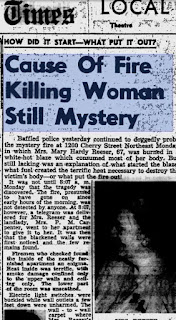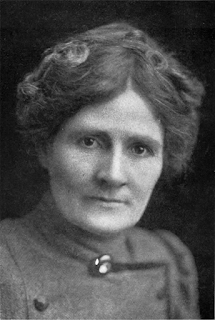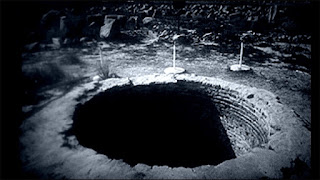Spontaneous Human Combustion
The question of whether or not spontaneous human combustion, a living human being suddenly bursting into flames, really happens is a rather old one. Hollywood has written stories of people in flames as a consequence of God's wrath on sinners, scholars have witnessed or described dramatic, though perhaps less supernatural, examples of the phenomenon. Hoquiam Washington has had at least one instance of what might have been a clear case spontaneous human combustion – with a twist: the victim being already dead.
On the night of December 6th, 1973, Betty and Sam Satlow were closing up the tavern they owned. Sam told his wife Betty that she could go home, perhaps because she had been drinking heavily that evening and was not much help. Around five A.M. The next morning, Sam finally went home, where he found Betty unconscious at the wheel of her car, which was parked in the garage. He called paramedics, who tried unsuccessfully to revive her. An autopsy later showed that she died of carbon monoxide poisoning, with a fifty-three percent saturation in her blood.
The logical assumption was that Mrs. Satlow had committed suicide, but there was no evidence that supported the claim; like a hose connected to the exhaust to cause it to suffocate the air in the car. The autopsy also showed that she had a blood alcohol level of .26%, which is very high, so police suggested that she might have passed out in her car and simply did not wake up. The coroner declared the question of suicide as indeterminate and left it at that.
After the autopsy, Betty's body was taken to the Coleman mortuary, where she was embalmed and placed in a metal casket. The family gathered for a service on December 9th, and then the casket was closed and the funeral parlor locked up for the night. The next day, early in the morning, a tenant living in an apartment above the mortuary's chapel woke up smelling smoke and immediately called the fire department.
When the firemen arrived, what they found was Betty's coffin at the center of a enormous blistery fire. Once the flames were exhausted, they examined the metal coffin in more detail. It seemed to have acted like an oven. They found that Mrs. Satlows upper body was reduced to nothing more than ashes and a few bone fragments. Below the hips her body was more or less intact, perhaps because there was less oxygen inside the sealed lower half of the coffin.
At first, police thought the fire was a bizarre case of vandalism. However, the fire department could find no evidence of arson, no lighter fluid or accelerant, and no sign of break-in. Ruling out vandalism, they had no rational explanation as to how the fire started. The police gave the coffin over to the U.S. Treasury department laboratory, which examined the coffin and remains. The lab technicians could not explain how the fire started either.
***
Another case of spontaneous human combustion comes from a rather famous example all the way to the other end of the country in St. Petersburg Florida from a woman by the name of Mary Reeser. On July 2nd 1951 at eight A.M. Reeser's landlord has come to her home with a telegram, upon knocking on the door and receiving no answer, she put her hand on the handle of the door. Noticing immediately that the door handle was uncomfortably warm, she immediately called the police and reported the potential of a fire.
Upon entering the room, the police found what could only have been described as a bizarre scene. In the corner of the family room was a deeply burned chair, with what seemed to be remains of Mrs. Reeser, in a pile of ash. All that had remained of the body was her foot, a backbone, and a skull which had curiously been described at the scene as being “small as a teacup.” all other objects around the room save the burned chair seemed to have weathered the fire fairly well, only warping or melting the plastic of those other furniture closest to the scene.
The St. Petersburg police chief J. R. Reichert gathered as much evidence of the scene as necessary, of which were small objects believed to be teeth, a portion of carpet and a surviving shoe worn by the late Mary Reeser at the time. Once compiled the evidence was sent to the then presiding FBI director J. Edgar Hoover with a note attached saying
“We request any information or theories that could explain how a human body could be so destroyed and the fire confined to such a small area and so little damage done to the structure of the building and the furniture in the room not even scorched or damaged by smoke."
After a few days, the FBI declared that Mary Reeser died of what is known as the Wick effect. Postulating that since she frequently used sleeping pills, it was possible that she fell asleep while smoking. The fire from the dropped cigarette would then have caught to her clothes and begun to burn away at her body melting the flesh and fat until nothing remained except ash and bone.
By request of police chief Richert, a physical anthropologist Wilton M. Krogman was asked to examine the scene as well, having had prior experience in the field examining human arson to aid crime detection. After careful study remains and after reading the FBI's full report of the situation, he had come to disagree with their conclusion stating:
“I cannot conceive of such complete cremation without more burning of the apartment itself. In fact the apartment and everything in it should have been consumed. [...] I regard it as the most amazing thing I have ever seen. As I review it, the short hairs on my neck bristle with vague fear. Were I living in the Middle Ages, I'd mutter something about black magic.”
Spontaneous human combustion is a hard-to-prove phenomenon. Most of the time there are no witnesses. Friends or family members simply find a handful of burned bones and ashes that were once their loved one. Various rational explanations for the phenomenon have been put forth, electrical wiring shorts, static electricity, and sometimes something as simple as a dropped match. Yet there are some cases that just don't lend themselves to the rational.



Comments
Post a Comment